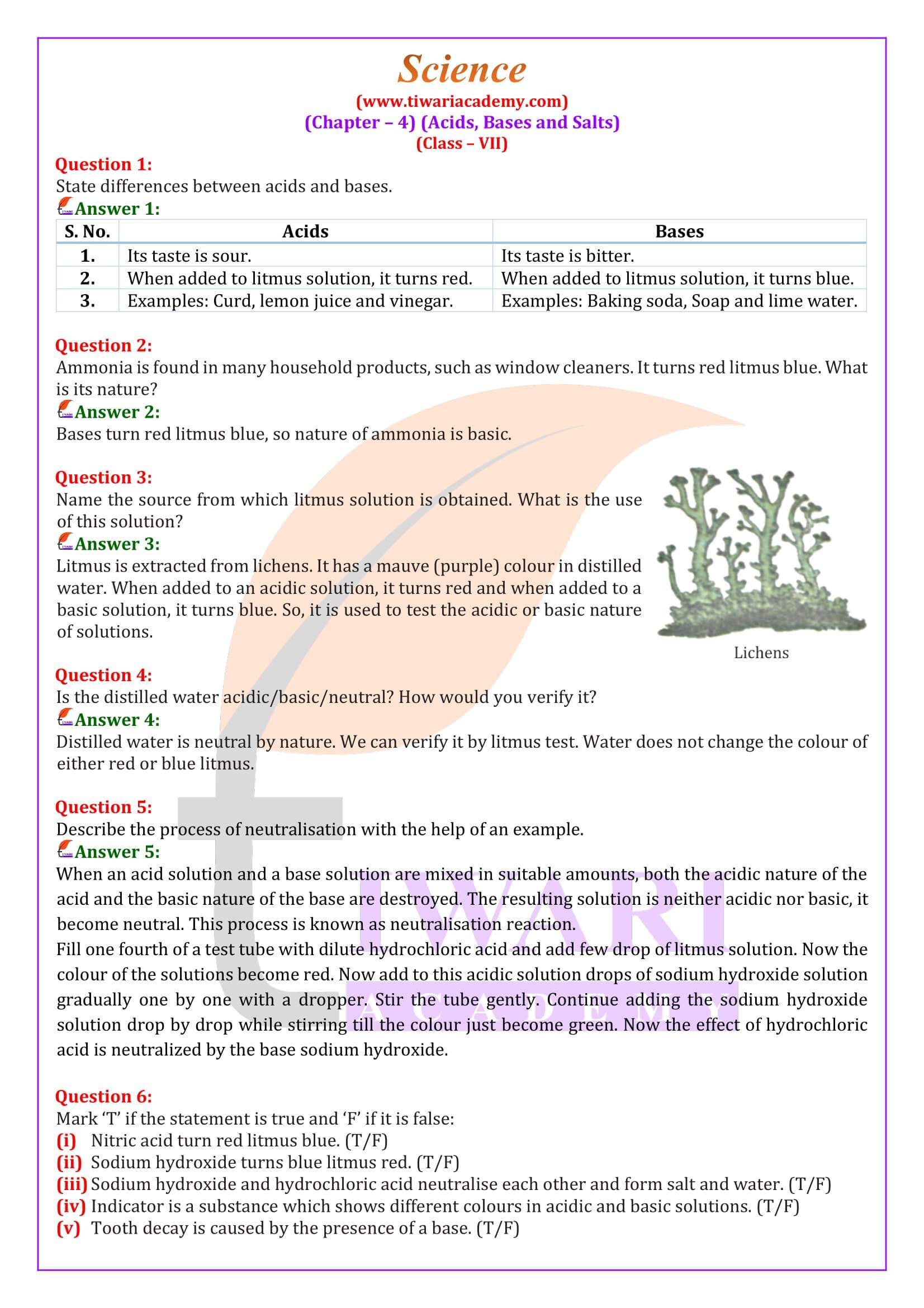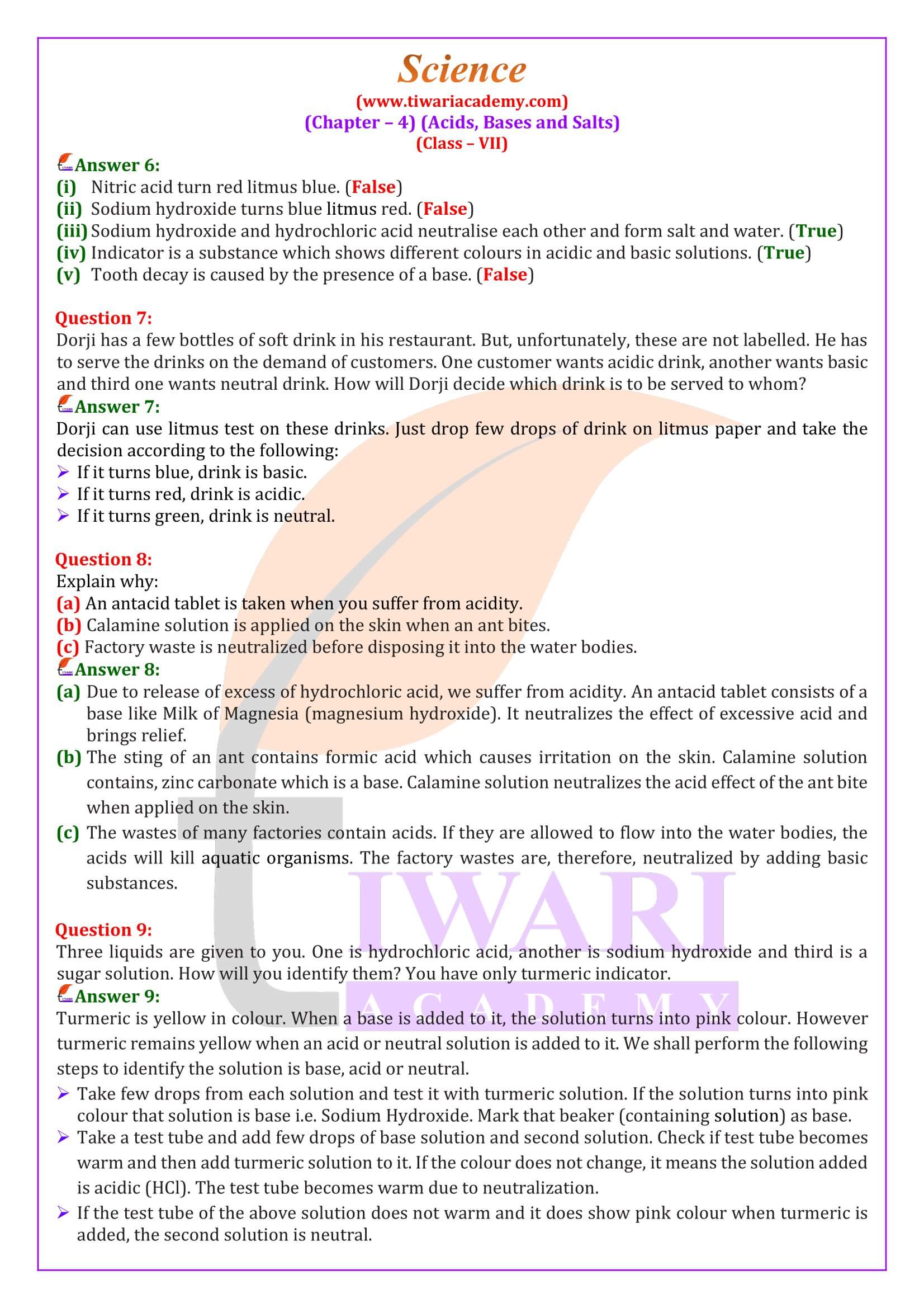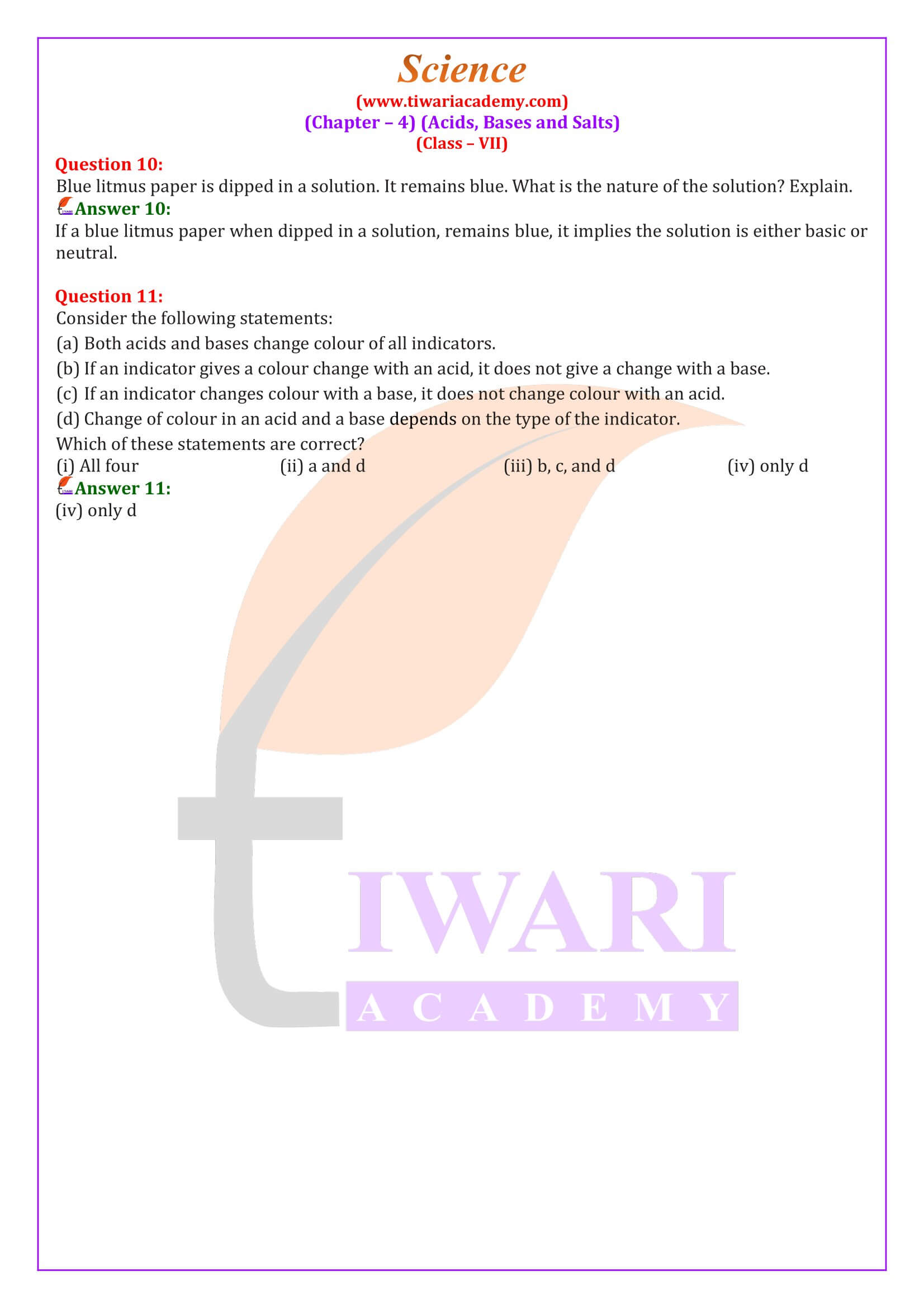Question Wise Class 7 Science Chapter 4 Solutions
Class 7 Science Chapter 4 NCERT Answers
Class 7 Science Chapter 4 in Hindi Medium
Class 7 Science Chapter 4 Extra Questions
Class 7 Science Chapter 4 MCQ
Class 7 Science NCERT Book Download
NCERT Solutions for Class 7 Science
NCERT Solutions for Class 7 Science Chapter 4 Acids, Bases and Salts in English and Hindi Medium free to download in PDF updated for CBSE Session 2025-26. The question answers and MCQs are modified and revised as per the new NCERT textbooks published for academic year 2025-26.
| Class: 7 | Science |
| Chapter 4: | Acids, Bases and Salts |
| Content: | MCQ, Exercises and Extra Questions |
| Session: | 2025-26 |
| Medium: | English and Hindi Medium |
Class 7 Science Chapter 4 NCERT Solutions
All the CBSE NCERT Solutions are given in Videos as well as in PDF file format. The complete explanation of chapter in English and Hindi Medium also given in videos. These explanation of 7th Science chapter 4 includes all the main keywords and definitions. CBSE Solutions given in Video format is following the latest NCERT Textbooks. NCERT Solutions Online and Offline Apps for the new session are given to free download. Share Your View with your friends via Discussion Forum. Contents on Tiwari Academy website are free to use. If someone is facing problem accessing the contents, please contact us for help. We will help you as soon as possible.
Class 7 Science Chapter 4 Answers
Class 7 Science Chapter 4 Explanation in Videos
Important Questions on 7th Science Chapter 4 for Practice
- Litmus, a natural dye is an extract of which of the following?
(a) China rose (Gudhal)
(b) Beetroot
(c) Lichen
(d) Blue berries (Jamun) - The correct way of making a solution of acid in water is to
(a) add water to acid.
(b) add acid to water.
(c) mix acid and water simultaneously.
(d) add water to acid in a shallow container. - Neutralisation reaction is a
(a) physical and reversible change.
(b) physical change that cannot be reversed.
(c) chemical and reversible change.
(d) chemical change that cannot be reversed. - Products of a neutralisation reaction are always
(a) an acid and a base.
(b) an acid and a salt.
(c) a salt and water.
(d) a salt and a base. - A solution changes the colour of turmeric indicator from yellow to red. The solution is
(a) basic
(b) acidic
(c) neutral
(d) either neutral or acidic - Turmeric is a natural indicator. On adding its paste to acid and base separately, which colours would be observed
(a) Yellow in both acid and base.
(b) Yellow in acid and red in base.
(c) Pink in acid and yellow in base.
(d) Red in acid and blue in base. - Which of the following set of substances contain acids?
(a) Grapes, lime water
(b) Vinegar, soap
(c) Curd, milk of magnesia
(d) Curd, vinegar - Phenolphthalein is a synthetic indicator and its colours in acidic and basic solutions, respectively are
(a) red and blue.
(b) blue and red.
(c) pink and colourless.
(d) colourless and pink - On adding phenolphthalein indicator to a colourless solution, no change is observed. What is the nature of this solution?
(a) Basic
(b) Either acidic or basic
(c) Either acidic or neutral
(d) Either basic or neutral - When the soil is too basic, plants do not grow well in it. To improve its quality what must be added to the soil?
(a) Organic matter
(b) Quick lime
(c) Slaked lime
(d) Calamine solution
Answers of Important Questions (MCQ)
- 1 (c)
- 2 (b)
- 3 (d)
- 4 (c)
- 5 (a)
- 6 (b)
- 7 (d)
- 8 (d)
- 9 (c)
- 10 (a).
Important NCERT Questions Class 7 Science Chapter 4
Ammonia is found in many household products, such as window cleaners. It turns red litmus blue. What is its nature?
Bases turn red litmus blue, so nature of ammonia is basic.
Is the distilled water acidic/basic/neutral? How would you verify it?
Distilled water is neutral by nature. We can verify it by litmus test. Water does not change the colour of either red or blue litmus.
Describe the process of neutralisation with the help of an example.
When an acid solution and a base solution are mixed in suitable amounts, both the acidic nature of the acid and the basic nature of the base are destroyed. The resulting solution is neither acidic nor basic, it become neutral. This process is known as neutralisation reaction. Fill one fourth of a test tube with dilute hydrochloric acid and add few drop of litmus solution. Now the colour of the solutions become red. Now add to this acidic solution drops of sodium hydroxide solution gradually one by one with a dropper. Stir the tube gently. Continue adding the sodium hydroxide solution drop by drop while stirring till the colour just become green. Now the effect of hydrochloric acid is neutralized by the base sodium hydroxide.
Explain why Calamine solution is applied on the skin when an ant bites?
The sting of an ant contains formic acid which causes irritation on the skin. Calamine solution contains, zinc carbonate which is a base. Calamine solution neutralizes the acid effect of the ant bite when applied on the skin.






